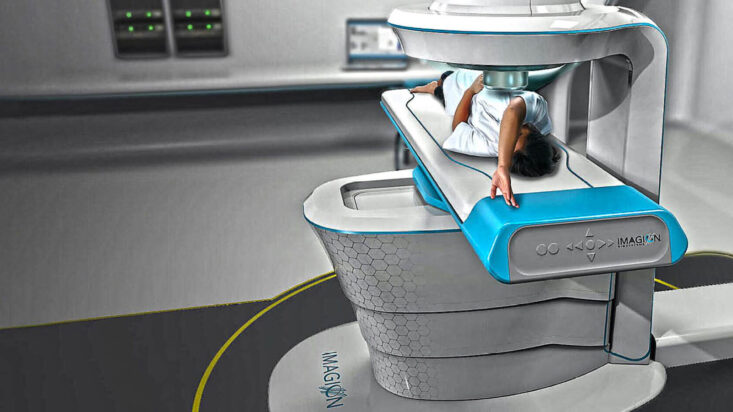Thinking forward: Three ASX biotech stars
And still they keep coming – here’s the fourth instalment of our series on the fascinating ASX cohort of medical device developers.
As always, don’t let the impressive sexiness of the technology persuade you on its own that these stocks are headed for the stars. In each of the three cases presented here, previous investors are sitting on capital losses, at least on paper. The addressable markets may be large, but the medical device world is the same as any biotech market: exciting, but risky. The decisions of the US Food & Drug Administration (FDA) can have very big ramifications for these stocks, as can trial results. However, the three stocks featured today have very real benefits associated with their technology, and therefore, a lot of potential.
Osprey Medical (OSP, 2.2 cents)
Market capitalisation: $16 million
Revenue: Yes
Profit: No
Three-year total return: -60.9% a year
Analysts’ consensus valuation: 19.1 cents (Thomson Reuters)
The Minnesota-based Osprey Medical, Inc. is commercialising technology that was invented by Professor David Kaye, a world-renowned heart failure specialist from Melbourne’s Alfred Hospital and Baker Heart and Diabetes Research Institute. Because the company is US-based, the ASX-listed shares are CHESS Depositary Instruments (CDIs).
Osprey’s technology addresses a major potential problem in heart imaging procedures, caused by the X-ray-visible dye that cardiologists inject during common heart procedures such as stenting and angioplasty. The dye is used as a contrast medium to help the doctors “see through” certain body parts and interpret the X-rays better. But the dyes are toxic and thus hazardous to patients with vulnerable kidneys, who can suffer of dye-related kidney damage known as contrast-induced acute kidney injury (CI-AKI). This can affect up to 30% of patients, and badly: it can lead to permanent kidney injury, which can result in patients requiring short-term dialysis, but in some cases, it can result in permanent kidney failure and even death.
Osprey’s DyeVert technology allows doctors to precisely control how much X-ray imaging dye they inject into patients undergoing heart imaging scans – it is a dose specific to each patient’s kidney function, determined prior to the procedure. This allows them to use less – DyeVert can reduce the amount of dye necessary to image a heart by up to 40%, reducing the risk of dye-related kidney damage, and also allows the individual’s cumulative dye dose to be monitored.
DyeVert is approved for sale in the US by the FDA – it is the only FDA-cleared medical device for reducing patient contrast exposure – and also in Europe, under CE Mark approval. In July, Osprey struck a four-year strategic alliance with global healthcare giant GE Healthcare under which GE Healthcare will exclusively distribute Osprey’s product portfolio – led by the second-generation DyeVert Power XT device – in Europe, Russia, Middle East, Africa, Central Asia and Turkey. In September, Osprey signed a three-year deal with Regional Health Care Group as exclusive distributor of its products in Australia and New Zealand.
CI-AKI costs hospitals over US$900 million a year in the US alone, and Osprey says it has an addressable market of about US$1.1 billion a year.
The OSP share price has been stuck in a long downtrend, but the major problem – attempting to market the device to heart specialists and hospitals one by one – has been solved with a succession of deals in the US with the big group purchasing organisations (GPOs) that buy in bulk, supply the clinicians and help them to navigate reimbursement protocols. It’s been a long time coming, and there are plenty of burnt shareholders along the way, but Osprey Medical appears to have finally turned the corner toward commercialisation.
Imagion Biosystems (IBX, 7.3 cents)
Market capitalisation: $66 million
Revenue: Yes
Profit: No
Three-year total return: -12.2% a year
Analysts’ consensus valuation: n/a
Imagion is trying to commercialise its medical device technology to non-invasively detect cancer, without exposure to radiation, through targeted magnetic nanoparticles to tag and detect cancers. The tiny bio-safe particles act as a magnetic beacon, that is detectable when they attach to cancer cells in the body.
The technology, known as MagSense, is based on tiny magnetic nanoparticles that produce a detectable magnetic signature if attached to the targeted diseased tissue, because they “relax” slowly from a brief weak magnetic field. If there is no tumour present, the bio-safe nanoparticles relax too quickly to be detectable and harmlessly circulate, eventually being broken down by the liver through normal metabolic processes.
The beauty of the Mag Sense technology is that it will identify the presence of cancer. Most cancers are asymptomatic, growing unnoticed and undetected until the tumour has grown large enough to cause identifiable symptoms. Imaging methods like X-rays, ultrasound, and MRI are only useful in detecting later-stage cancers, where the tumour has grown to be tens- or hundreds-of-millions of cells in size. As a result, conventional cancer treatments usually start after a cancer has grown large, and has developed defensive mechanisms, or has already progressed and spread.
Because current methods cannot distinguish benign tumours from true cancers, invasive biopsy procedures are needed to confirm if it is truly cancer, often resulting in needless patient anxiety. Before MagSense is applied, a physician will identify the need for an imaging test, based on clinical assessment of symptoms, risk factors or other diagnostic indicators. The patient is given an injection of the cancer-specific MagSense nanoparticles; the patient is positioned under the magnetic sensor while a magnetic field is applied for a few minutes, and the physician receives functional imaging results indicating if a tumour is present.
The MagSense technology has obtained “Breakthrough Device” designation from the Food & Drug Administration (FDA): this designation is only assigned to technologies that are considered to be potentially transformative in terms of patient care or outcomes. Earlier this month, Imagion gained Human Research Ethics Committee (HREC) approval for a Phase 1 study of MagSense in effectively detecting HER2 metastatic breast cancer in its early stages. The trial will start by the end of the year, in Australia, with the trial sites yet to be announced.
Cyclopharm (CYC, $2.01)
Market capitalisation: $161 million
Revenue: Yes
Profit: No
Three-year total return: +30% a year
Analysts’ consensus valuation: $2.11 (Thomson Reuters)
Cyclopharm is a diagnostic imaging company specialising in lung health, with its flagship medical device being Technegas, a lung ventilation imaging agent contained in a gas. Technegas is an ultra-fine dispersion of radioactive labelled carbon: the patient inhales the gas during a medical imaging procedure, and the labelled carbon helps to produce images that accurately demonstrate lung function.
Technegas has previously been used to diagnose pulmonary embolisms but may help diagnose other respiratory complaints. More recently, the gas has shown the potential for applications in fighting the COVID-19 pandemic, which impacts the respiratory system of its victims.
Cyclopharm sells Technegas in 60 countries throughout the world, with more than 1,500 nuclear medicine departments using it, and more than 4.2 million patient procedures recorded in almost 30 years. But it has not yet cracked the US market: in May, the FDA gave it approval to file a new drug application (NDA). This kicks off a review stage involving a ten-month qualitative review in which the FDA will assess “the safety and efficacy of Technegas as a nuclear medicine functional lung ventilation imaging agent.”
Without being over-confident, given its success in 60 other countries, Cyclopharm says it is planning for first US commercial sales in 2021.
This confidence was borne out last month, when Cyclopharm announced that its Phase 3 clinical trial of Technegas in the US had successfully met the primary efficacy endpoint, with the independent Data Monitoring Efficacy Committee (DEMC) unanimously recommending that the trial be “terminated because of success.” In response, Cyclopharm CEO James McBrayer said the trial result “further deâ€risks our pathway to FDA approval to sell Technegas in the US market in 2021.”











